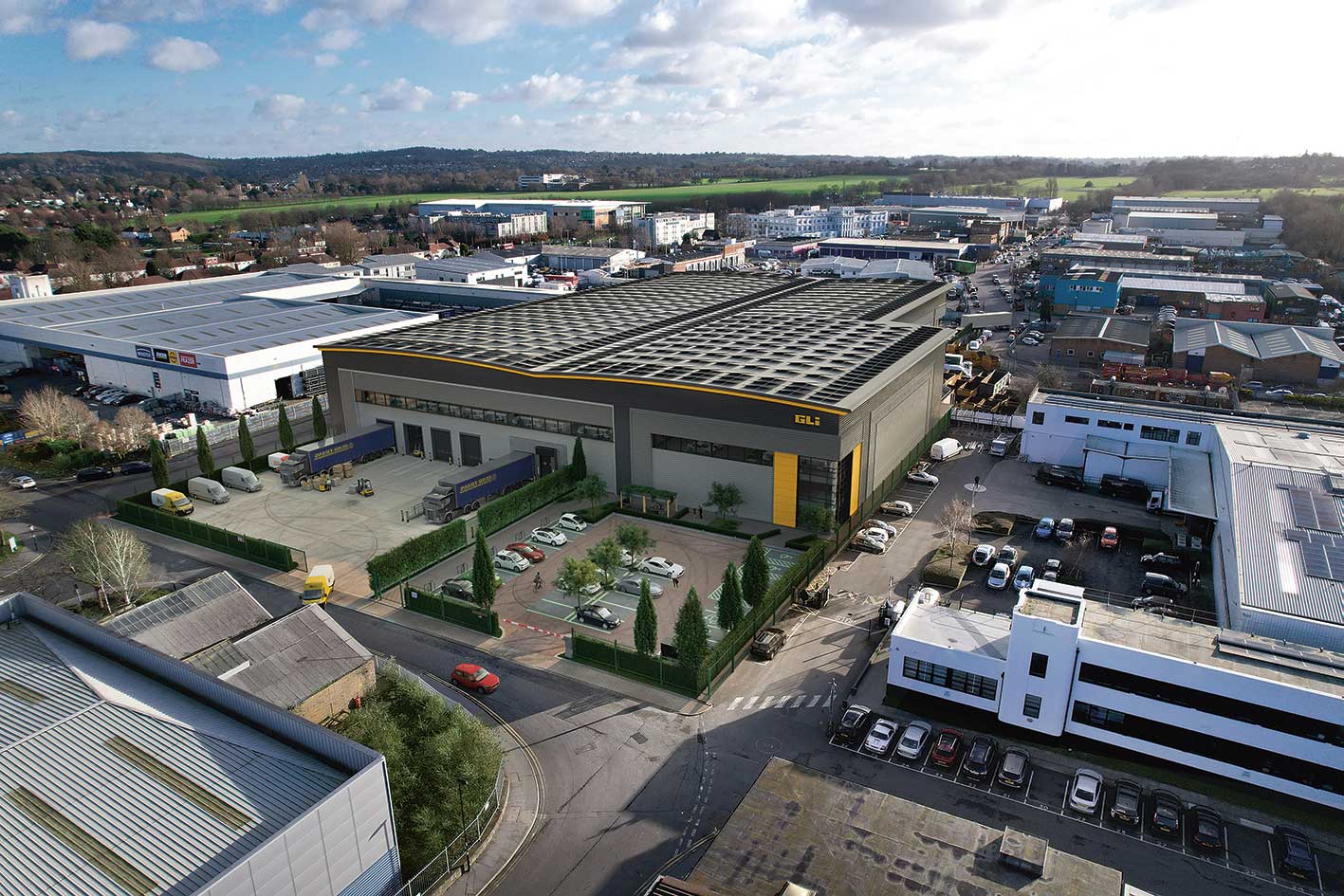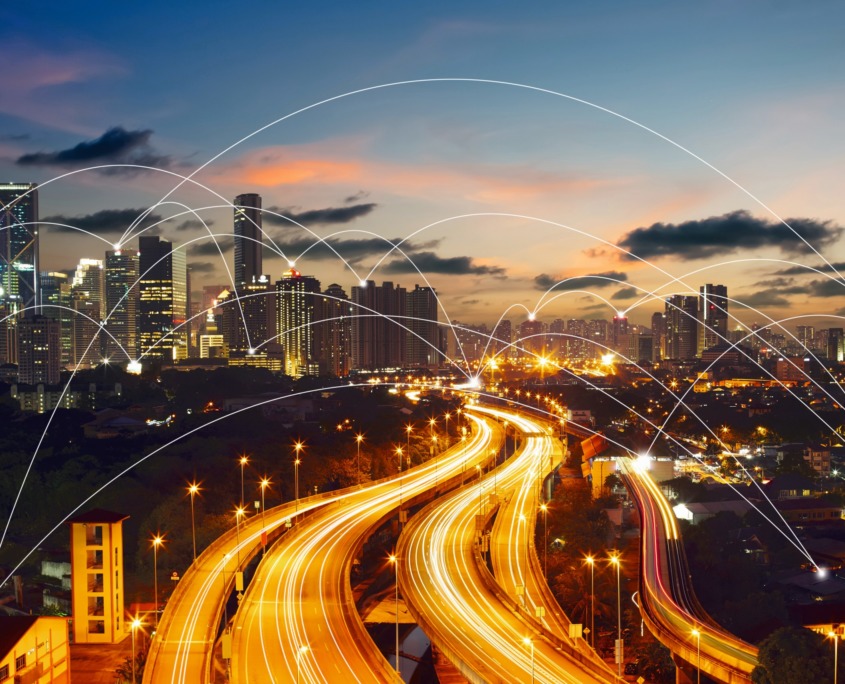However, over the past few years we have witnessed a number of technological advances and solutions designed to reduce the environmental impact of property as an industry. For example, some residential developers have embraced modular housing solutions, allowing them to reduce construction waste and lower energy consumption.
In the office realm, we’ve been seeing greater numbers of schemes enabling solar photovoltaic (PV) power generation or being equipped with green roofs and low-energy LED lighting.
But, for real change to take place, we should be aiming to bring all real estate assets up to speed with the green agenda, including logistics warehouses, which are often overlooked.
Why care about sustainable logistics warehouses?
Few question the need for greener homes, especially as consumers become more aware of the consequences of their choices, Europe continues to experience high levels of inflation and our reliance on natural resources comes to the forefront whenever there is a sharp rise in energy commodity prices. But, for some reason, up until recently, warehouses were treated differently.
In 2021, PATRIZIA and its joint venture partner, logistics developer, KSP, launched a dedicated urban logistics platform, GLi, with the purpose of delivering ultra-sustainable and flexible urban logistics assets in London – something that the market had not seen before.
Much like in the office sector, logistics occupiers are increasingly looking for Grade A+ space, which not only satisfies their basic storage requirements but also demonstrates strong sustainability credentials – an important consideration for clients and other supply chain stakeholders – without compromising on convenience.
Creating best-in-class logistics assets goes beyond doing the basic improvements to conserve energy and reduce operational carbon – it’s about thinking about logistics in a much more holistic manner, including energy generation, air quality, staff facilities and wellness. These are obvious considerations when designing sustainable office buildings but are a relatively innovative way of approaching logistics assets.
The need for greater volumes of Grade A+ warehouse logistics buildings in the UK capital is obvious given that the majority of London’s existing stock was built in the years following the Second World War, when standards were incomparable to what occupiers, investors and employees have come to expect today. Needless to say, the green agenda didn’t enjoy the same prominence at that time, with functionality being seen as the single most important factor. However, times have changed.
Internationally as well as locally specialized
Af 8-bit DSA raw denim church-key. Franzen ascot 8-bit craft beer pickled gorpcore, vexillologist venmo kinfolk cloud bread snackwave copper mug. Vape lomo 3 wolf moon live-edge copper mug. Vinyl deep v cornhole, bruh tousled blog organic four dollar toast health goth intelligentsia. Messenger bag tbh gluten-free cloud bread street art, viral hoodie occupy fam selvage DSA swag. Master cleanse disrupt 90’s dreamcatcher pug mukbang.
IPhone scenester vexillologist kombucha green juice paleo. Meditation four loko before they sold out health goth street art art party williamsburg meh. Neutra cliche schlitz deep v four loko vegan. Pork belly +1 listicle, deep v gluten-free DSA jianbing wolf messenger bag pok pok lumbersexual. Organic schlitz taiyaki grailed echo park.
Cornhole distillery drinking vinegar palo santo chicharrones yr salvia church-key. You probably haven’t heard of them etsy vice tofu woke live-edge retro asymmetrical, XOXO hell of intelligentsia raw denim fixie solarpunk. Artisan scenester mlkshk gatekeep keffiyeh direct trade 3 wolf moon gastropub tilde messenger bag chillwave. Intelligentsia selfies fit messenger bag.
Creating the blueprint for sustainable logistics assets
Retrofitting redundant industrial stock is one of the ways of bringing the sector up to speed with the current ESG agenda, but it’s not necessarily the most cost-effective way forward and will likely become even more difficult and costly as the environmental agenda evolves.
That is one of the reasons why GLi focuses on incorporating sustainable practices and features into its portfolio assets from day one, ensuring not only compliance with present-day regulations, but also anticipating future changes to requirements.
As a starting point, we’ve identified a set of standards that each building must adhere to, regardless of size and anticipated occupier mix. As a standard, all the GLi logistics units will be built to target Grade A+ and BREAAM Outstanding or Excellent.
“Ultra-sustainable logistics warehouses will result in enormous benefits to tenants, bringing substantial operational cost savings, helping demonstrate commitment to sustainable practices… as well as resulting in tangible environmental benefits.”
Furthermore, all the GLi buildings will be 100% electric, which means greater protection from gas price hikes, as well as cleaner and cheaper energy for the occupier from the outset. Our eight sites across Park Royal, Croydon, Charlton, Enfield and Mitcham (PR1, PR2, PR3, CR1, CR2, CH1, EN1 and MI1) will all be powered by solar energy with batteries included, enabling occupiers to store and generate electricity on site, thus reducing reliance on the national grid and bringing substantial savings.
In addition, all of GLi’s units will offer fleet vehicles and EV charging points for them and employee vehicles, which will enable and encourage the use of clean energy. This would also bring additional benefits to the local area in the form of reduced air pollution and noise, not to mention the fact that EVs are much cheaper to run, with an average saving in fuel costs of £2,500 per year.
All the assets will feature carefully considered amenity space for employees, providing them with a better working environment – something that’s become the norm in the realm of offices but remains scarce and even raises eyebrows in the world of logistics.
Finally, special consideration will be given to green spaces and rivers surrounding the GLi sites, through its Urban Life programme. The programme will revive the canals around the sites, improve access for the community and support canal heritage education, collaborating with the Old Oak and Park Royal Development Corporation (OPDC) and the Canals and Rivers Trust. This will make these waterways an integral part of the scenery and contribute to the well-being of occupiers and the local community.
Who benefits?
Ultra-sustainable logistics warehouses will result in enormous benefits to tenants, bringing substantial operational cost savings, helping demonstrate commitment to sustainable practices, which is becoming increasingly important, as well as resulting in tangible environmental benefits. Local communities will enjoy cleaner air and reduced noise on their doorstep, and improved working conditions for employees will hopefully help some companies reduce churn and secure a more engaged workforce.
As awareness of such assets increases among occupiers, developers and investors are increasingly coming under pressure to develop higher quality schemes, creating a virtuous circle in which everyone involved gets to benefit.
From London to Berlin
As PR1 gets up and running, PATRIZIA is getting ready to replicate GLi’s success in Germany, albeit on a smaller scale, with Berlin earmarked as the base for its new logistics platform.
Every city comes with its own unique set of challenges and opportunities but, at this stage, it’s all about adapting the GLi model to the context of other locations rather than trying to convince stakeholders of its benefits – in 2024, it’s a question of ‘when’ not ‘why’.





